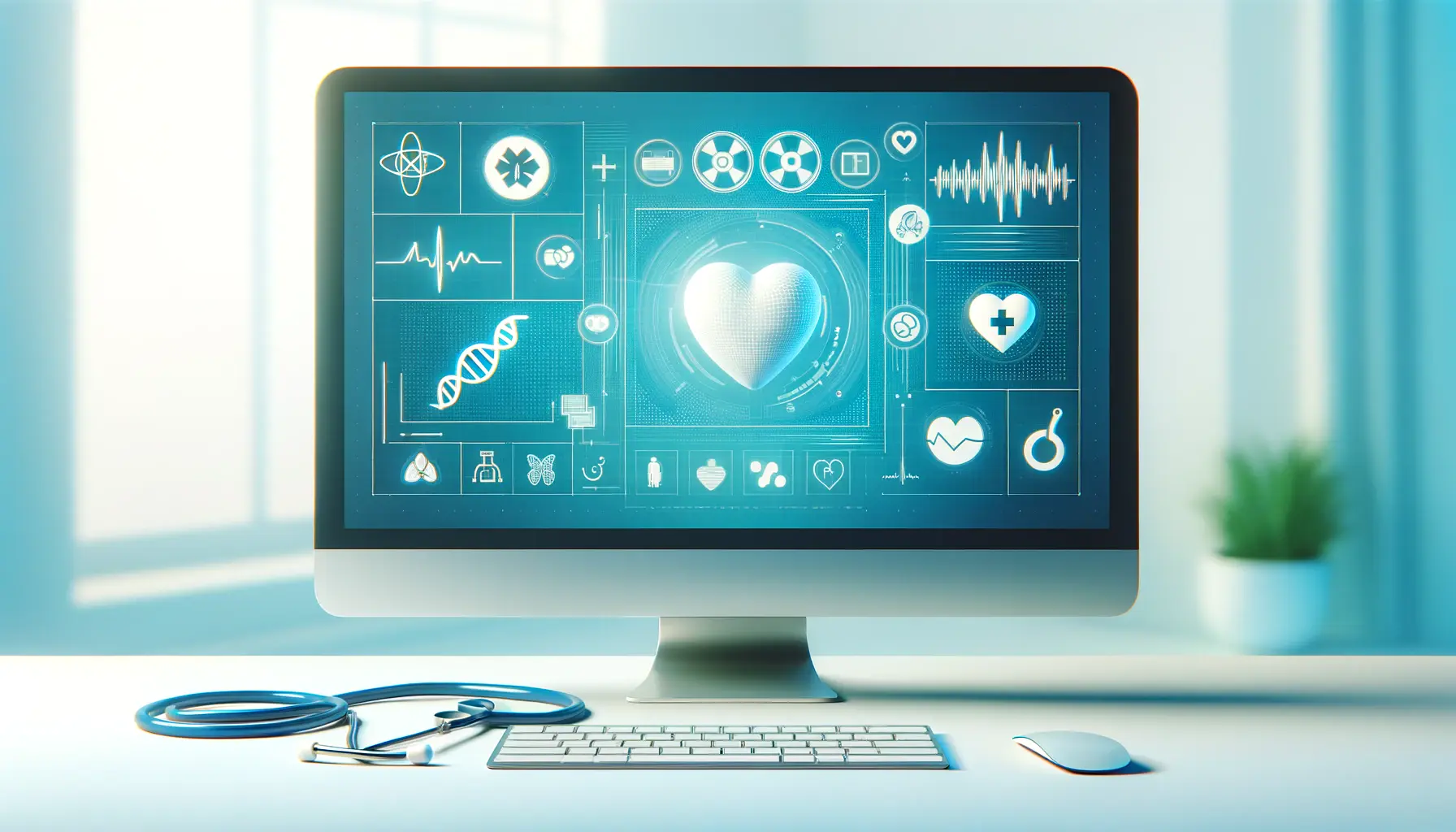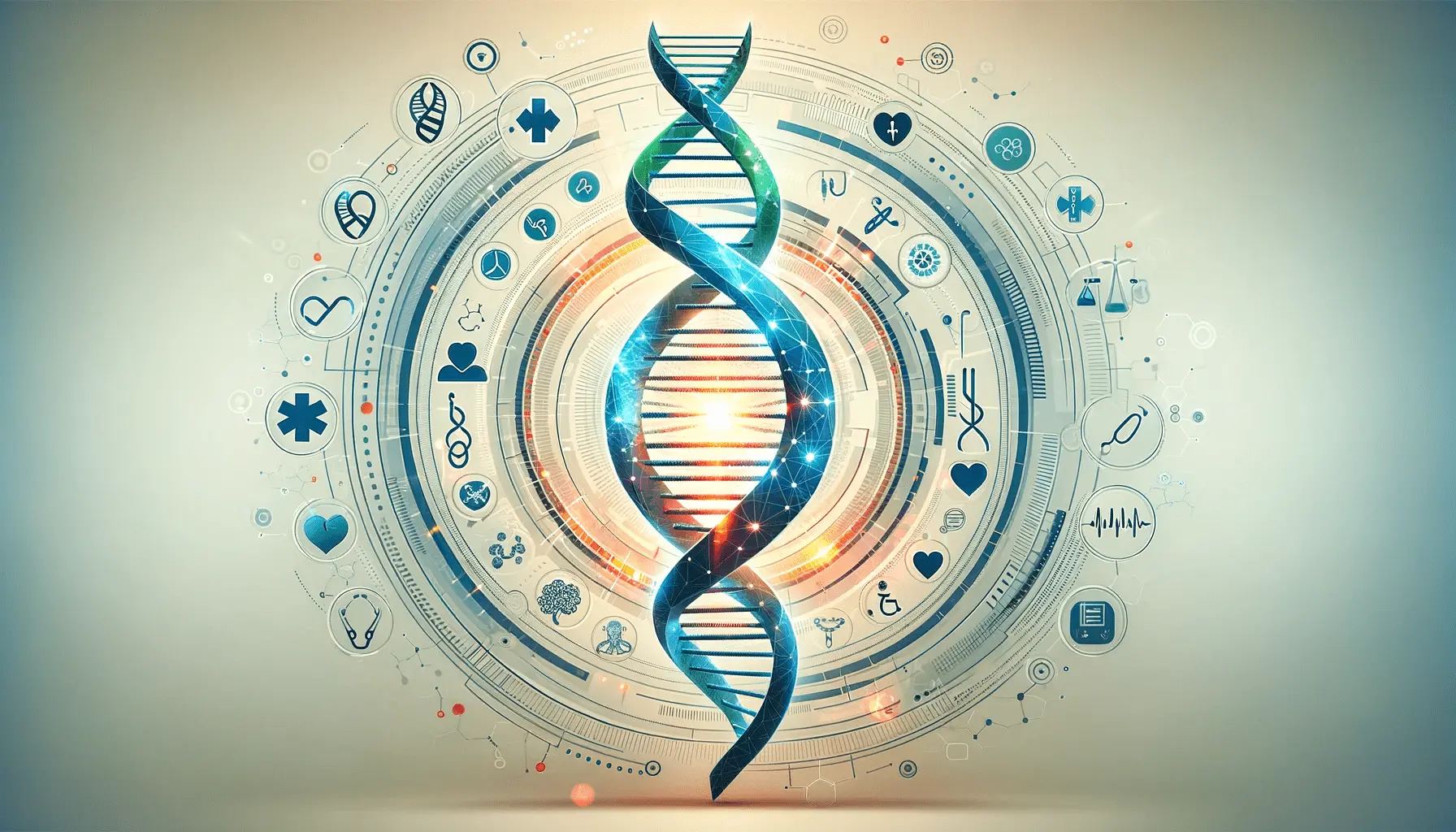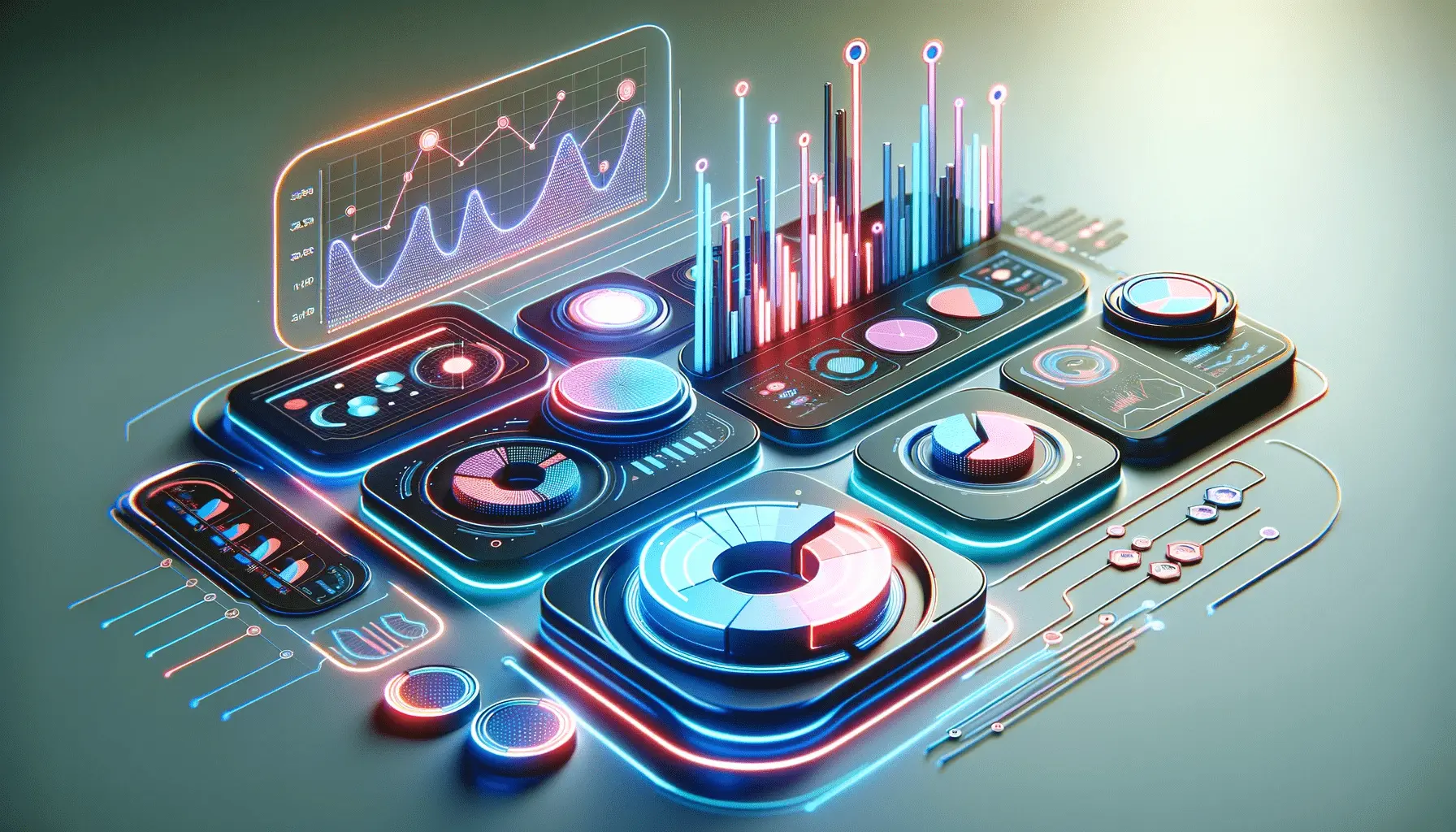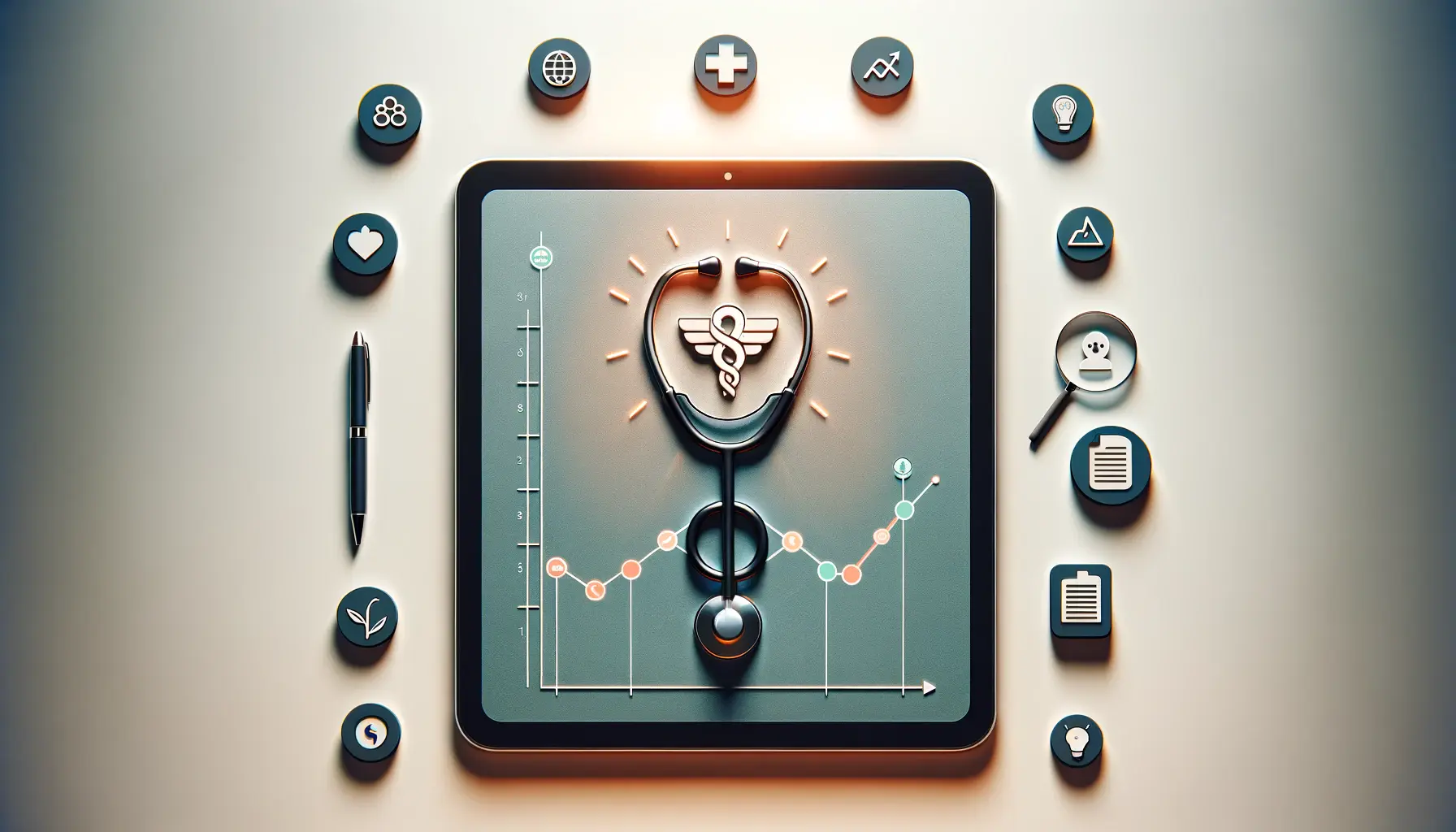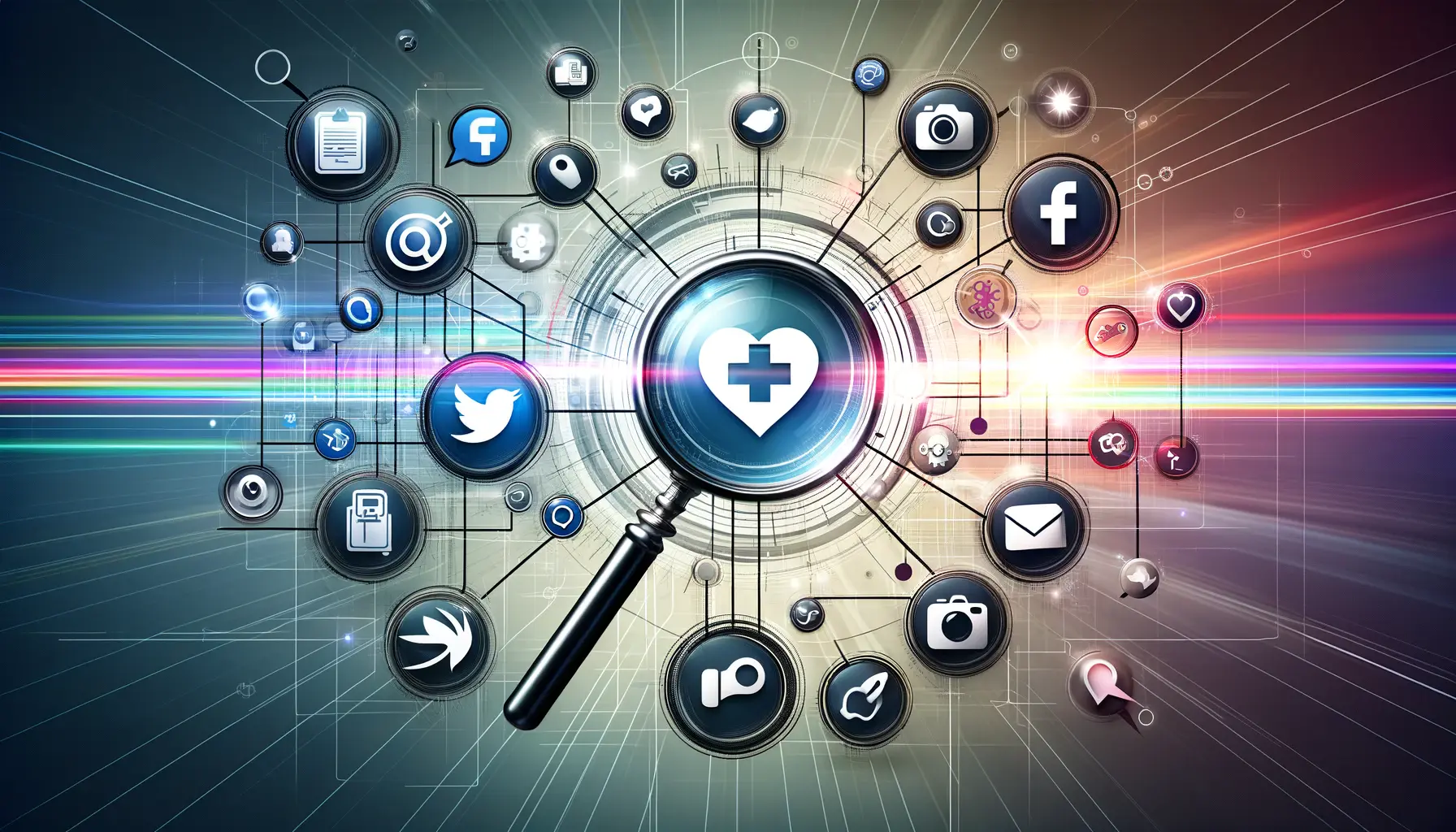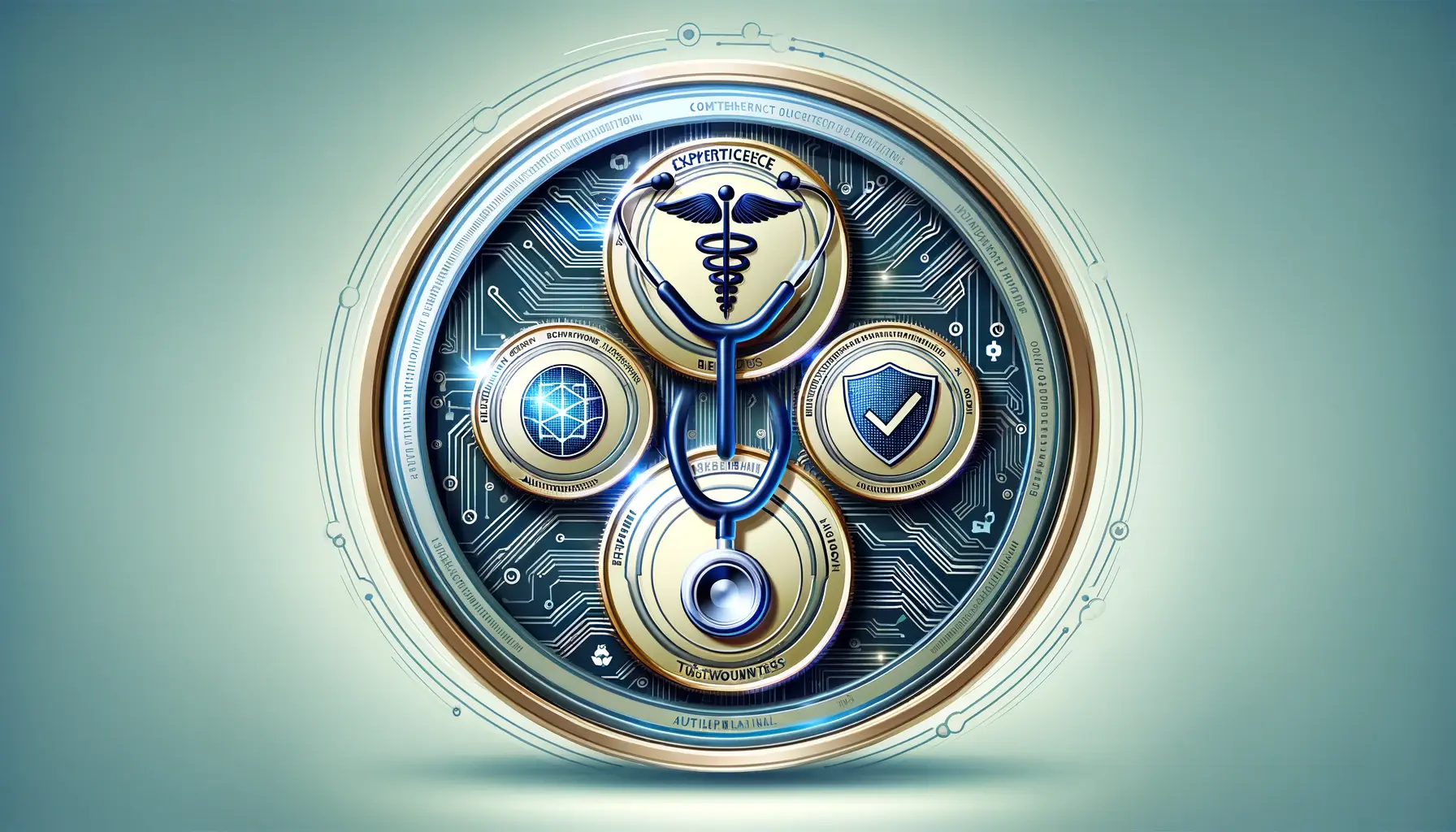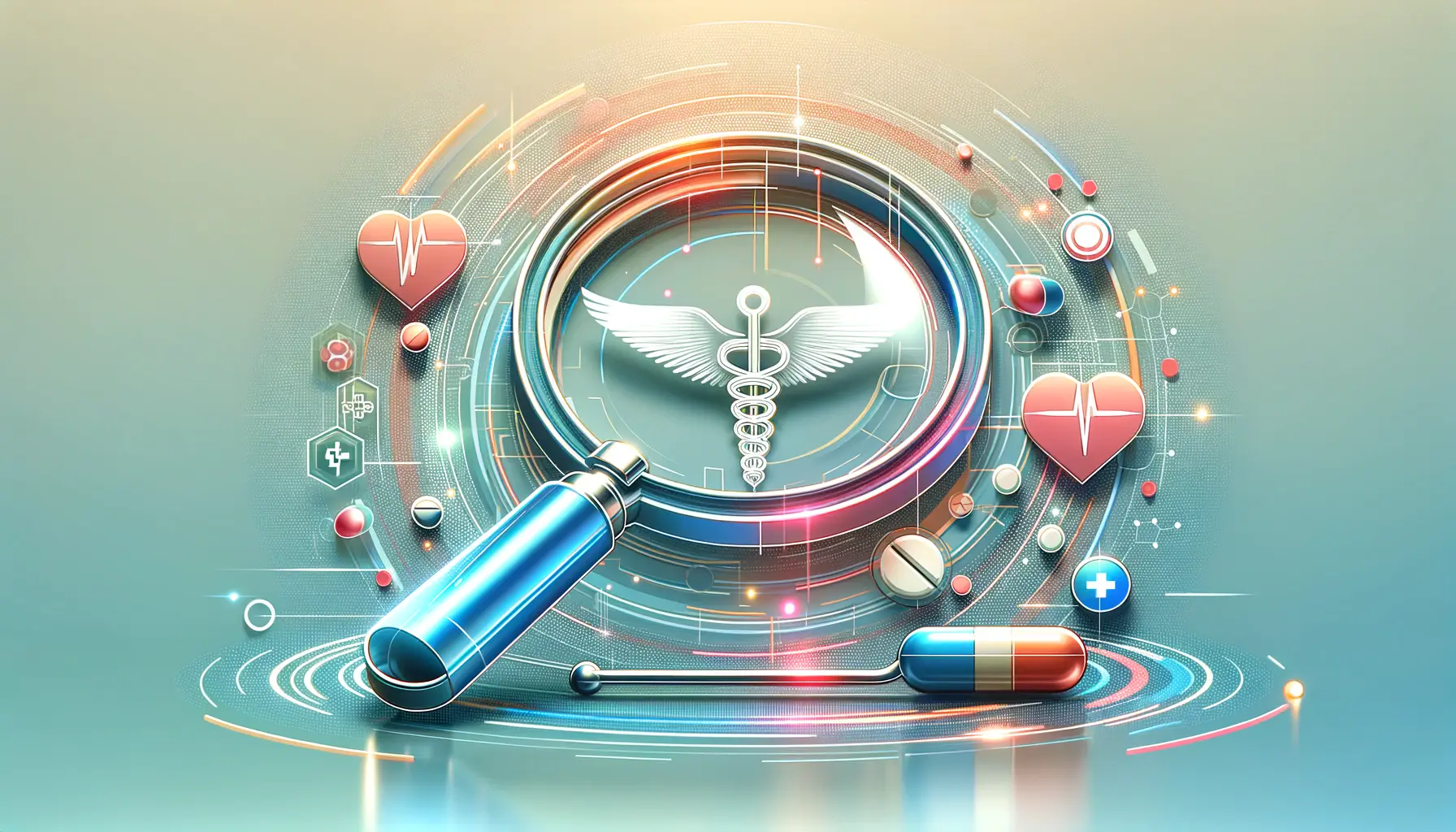The integration of artificial intelligence (AI) into healthcare has opened new frontiers in the way medical data is interpreted and utilized.
Among the most innovative advancements is the application of DALL-E, an AI model developed by OpenAI, which has the capability to generate images from textual descriptions.
This technology’s application in healthcare, particularly in visualizing medical data, is not just a leap towards futuristic medicine but also a tool that could potentially revolutionize patient care, research, and medical education.
Understanding complex medical data and converting it into a format that is easily interpretable by healthcare professionals and patients alike is a challenge that the healthcare industry faces.
DALL-E, with its advanced image generation capabilities, offers a solution to this problem.
By providing detailed, accurate visual representations of medical conditions, treatments, and outcomes based on textual data, DALL-E helps bridge the gap between complex medical information and actionable insights.
- The Role of DALL-E in Medical Imaging
- Customizing Patient Education and Engagement
- Overcoming Language and Literacy Barriers
- Challenges and Ethical Considerations
- Integrating DALL-E with Electronic Health Records (EHRs)
- Personalizing Patient Experiences with DALL-E
- Advancing Research and Development with DALL-E
- Empowering Healthcare with DALL-E: A Vision for the Future
- DALL-E in Healthcare: Frequently Asked Questions
The Role of DALL-E in Medical Imaging
Enhancing Diagnostic Accuracy
The accuracy of diagnoses in medicine significantly depends on the clarity and detail of medical images.
DALL-E’s ability to generate high-resolution images from textual descriptions has the potential to enhance the clarity of medical imaging.
For instance, by inputting data from patient reports and existing medical imagery, DALL-E can produce detailed visualizations that highlight areas of concern, such as tumors or fractures, with greater precision.
This not only aids in early detection but also in planning effective treatment strategies.
The precision of DALL-E-generated images in identifying and highlighting medical conditions can significantly reduce diagnostic errors, leading to improved patient outcomes.
Transforming Medical Education
Medical education relies heavily on the availability of accurate and detailed visual materials.
DALL-E’s capacity to create images from textual descriptions can provide educators and students with an invaluable resource.
By generating anatomical illustrations, disease progression visuals, and treatment effect simulations, DALL-E can offer a more interactive and engaging learning experience.
This not only enhances the understanding of complex medical concepts but also prepares future healthcare professionals with a more comprehensive knowledge base.
Furthermore, the ability to visualize medical scenarios that are difficult to replicate in real life, such as rare diseases or unique surgical complications, can significantly broaden the scope of medical education, making it more inclusive and diverse.
Customizing Patient Education and Engagement
The application of DALL-E in healthcare extends beyond diagnostics and education into enhancing patient engagement and understanding.
Personalized patient education is crucial in managing chronic conditions, preparing for procedures, and understanding potential outcomes.
DALL-E’s ability to generate specific visual content based on individual patient data can transform the way healthcare providers communicate complex medical information.
For example, by inputting a patient’s specific condition and treatment plan, DALL-E can produce visual aids that accurately represent their situation, making it easier for patients to comprehend their health status and the proposed care plan.
This personalized approach not only improves patient understanding but also empowers them to make informed decisions about their health.
- Visualizing Treatment Plans: Detailed images depicting how a treatment works can demystify medical procedures and reduce patient anxiety.
- Understanding Disease Progression: Visuals illustrating the progression of a condition can motivate patients to adhere to treatment protocols.
- Explaining Surgical Procedures: Using DALL-E to create step-by-step visuals of surgical procedures can help patients understand and prepare for surgery.
Facilitating Remote Healthcare
The global shift towards telehealth necessitates innovative approaches to remote patient care.
DALL-E’s technology can play a pivotal role in this domain by providing visual explanations of medical conditions and treatments through digital platforms.
This capability is especially beneficial in remote areas with limited access to specialized healthcare services.
By integrating DALL-E-generated images into telehealth platforms, healthcare providers can offer more comprehensive and understandable consultations.
Patients can view customized images that explain their health conditions or how certain medications work, enhancing the telehealth experience and ensuring that patients receive quality care, regardless of their location.
The integration of DALL-E into telehealth services could significantly enhance patient comprehension and satisfaction, making healthcare more accessible and efficient.
Overcoming Language and Literacy Barriers
In a world where healthcare needs are as diverse as its population, the challenge of language and literacy barriers in patient care cannot be overstated.
DALL-E’s image generation capabilities present a unique solution to this issue, offering visual communication tools that transcend language barriers.
By converting medical text into universally understandable images, DALL-E enables healthcare providers to convey critical information to patients regardless of their language proficiency or literacy levels.
- Visual Instructions for Medication: Images showing how and when to take medications can improve adherence, especially among patients who struggle with reading or understanding written instructions.
- Disease Symptom Visualization: Illustrations of disease symptoms can aid in early detection and encourage patients to seek medical advice without the need for complex medical terminology.
- Postoperative Care Instructions: Visual guides on postoperative care can significantly enhance recovery outcomes by providing clear and easy-to-follow instructions.
Streamlining Clinical Workflows
The integration of DALL-E into clinical workflows can significantly reduce the time healthcare professionals spend on creating patient education materials.
By automating the generation of visual aids, clinicians can focus more on patient care rather than on administrative tasks.
This not only improves efficiency but also enhances the quality of care provided.
Moreover, DALL-E can assist in creating standardized yet customizable templates for common conditions and treatments.
This standardization ensures consistency in patient education while allowing for personalization based on individual patient needs, further streamlining clinical operations and improving patient engagement.
The potential of DALL-E to streamline clinical workflows and enhance patient care through visual communication highlights the transformative impact of AI in healthcare.
Challenges and Ethical Considerations
While the benefits of DALL-E in healthcare are vast, it’s crucial to address the challenges and ethical considerations that accompany its implementation.
As with any AI technology, concerns regarding data privacy, accuracy of generated images, and the potential for misuse must be carefully navigated.
Ensuring the privacy and security of patient data used to generate images is paramount.
Healthcare providers must adhere to strict data protection regulations, such as HIPAA in the United States, to prevent unauthorized access to sensitive information.
Additionally, the accuracy of DALL-E-generated images is critical, especially when these images are used in diagnostic processes or patient education.
Misinterpretations due to inaccurate visuals could lead to misdiagnoses or patient confusion.
- Data Privacy and Security: Implementing robust encryption and access controls to protect patient data used by DALL-E.
- Accuracy and Reliability: Regularly validating the accuracy of images generated by DALL-E against medical standards to ensure they are clinically reliable.
- Ethical Use: Establishing guidelines for the ethical use of AI-generated images, ensuring they are used to enhance patient care and not to mislead or replace professional medical advice.
Future Directions and Innovations
The future of DALL-E in healthcare looks promising, with ongoing advancements in AI technology paving the way for more sophisticated applications.
Innovations could include the development of more advanced algorithms capable of generating 3D images for surgical planning or virtual reality simulations for medical training.
Additionally, integrating DALL-E with other AI technologies, such as natural language processing (NLP) systems, could further enhance its utility in creating comprehensive patient education materials that combine visual aids with written explanations.
As DALL-E continues to evolve, its potential to transform various aspects of healthcare becomes increasingly apparent.
From improving patient outcomes through better education and engagement to streamlining clinical workflows and facilitating remote healthcare, DALL-E stands at the forefront of the digital revolution in healthcare.
However, navigating the challenges and ethical considerations associated with its use will be crucial in realizing its full potential.
The integration of DALL-E into healthcare represents a significant step forward in the digital transformation of the industry, promising to enhance patient care through innovative visual communication tools.
Integrating DALL-E with Electronic Health Records (EHRs)
The integration of DALL-E with Electronic Health Records (EHRs) presents a groundbreaking opportunity to enhance the utility and accessibility of medical data.
By embedding DALL-E’s image generation capabilities directly into EHR systems, healthcare providers can instantly create visual representations of patient data, facilitating a more intuitive understanding of medical information.
This integration can significantly improve the efficiency of clinical decision-making and personalize patient care plans.
For instance, a physician reviewing a patient’s lab results in the EHR could use DALL-E to generate visual graphs or charts that highlight key trends or abnormalities.
This not only aids in the rapid assessment of patient data but also enhances the communication of complex information to patients, helping them understand their health status and treatment options more clearly.
- Visual Summaries of Patient Histories: Generating visual timelines of a patient’s medical history for quick reference during consultations.
- Illustrated Lab Results: Transforming numerical lab results into visual formats that are easier to interpret and explain.
- Customized Patient Education Materials: Automatically creating visual aids tailored to a patient’s specific conditions and treatments, directly from their EHR data.
Collaboration Between AI and Healthcare Professionals
The successful implementation of DALL-E in healthcare hinges on a collaborative approach between AI technologies and healthcare professionals.
While DALL-E can generate detailed images and visual aids, the expertise and judgment of medical professionals are essential in interpreting these visuals accurately and applying them effectively in patient care.
This collaboration ensures that AI-generated images are used as a complement to, rather than a replacement for, professional medical advice and expertise.
Moreover, ongoing training and feedback from healthcare professionals can help refine DALL-E’s algorithms, improving the accuracy and relevance of the images it generates.
This iterative process, where AI learns from human expertise and vice versa, is key to maximizing the benefits of DALL-E in healthcare settings.
The synergy between DALL-E’s AI capabilities and the expertise of healthcare professionals is crucial for enhancing patient care and advancing medical knowledge.
Personalizing Patient Experiences with DALL-E
The advent of DALL-E in healthcare opens up unprecedented avenues for personalizing patient experiences.
By leveraging AI to generate images that resonate with individual patient needs and preferences, healthcare providers can create a more engaging and comforting care environment.
Personalization can range from customizing educational materials to suit a patient’s learning style, to visualizing treatment effects on a body similar in age, gender, or ethnicity to the patient, thereby making healthcare experiences more relatable and less intimidating.
Such personalized visual aids not only enhance patient understanding and engagement but also foster a deeper emotional connection with their care journey.
This tailored approach can significantly impact patient satisfaction and compliance, as they feel more seen, understood, and involved in their healthcare processes.
- Visualizing Personal Health Journeys: Creating images that depict a patient’s specific health progression or recovery journey, enhancing motivation and adherence to treatment plans.
- Customized Wellness Visuals: Generating visuals for wellness and preventive care plans that align with a patient’s lifestyle, interests, and health goals, promoting a proactive approach to health maintenance.
- Emotional Support Visuals: Designing images that offer emotional support, such as visual affirmations or relaxation scenes, to help patients cope with stress, anxiety, or the challenges of chronic conditions.
Enhancing Patient-Provider Communication
DALL-E’s role in healthcare extends to enhancing communication between patients and providers.
By generating visuals that accurately reflect a patient’s condition, treatment options, or potential outcomes, DALL-E facilitates a clearer and more effective dialogue.
Patients can better articulate their concerns and preferences when they have visual references, while providers can offer more precise explanations and reassurances.
This improved communication fosters a stronger therapeutic relationship, crucial for successful healthcare outcomes.
Furthermore, the use of visuals can help bridge communication gaps that may exist due to cultural differences, language barriers, or varying levels of health literacy.
By providing a common visual language, DALL-E can make healthcare more inclusive and accessible to diverse patient populations.
Leveraging DALL-E for personalized patient experiences and enhanced communication represents a significant leap towards patient-centered care, where technology and empathy converge to improve healthcare delivery.
Advancing Research and Development with DALL-E
The application of DALL-E in healthcare research and development (R&D) heralds a new era of innovation and discovery.
By generating detailed visual simulations of medical conditions, treatment mechanisms, and potential drug effects, DALL-E can significantly accelerate the R&D process.
Researchers can use these visuals to conceptualize complex biological processes, design experimental studies, and communicate findings more effectively, both within the scientific community and to the general public.
Moreover, DALL-E’s ability to create images from textual descriptions can facilitate the exploration of hypothetical scenarios in medical research, such as the impact of novel therapies on rare diseases.
This capability not only broadens the scope of research but also encourages creative problem-solving and hypothesis generation, driving forward the frontiers of medical science.
- Visualizing Experimental Outcomes: Using DALL-E to predict and illustrate the outcomes of clinical trials or laboratory experiments, aiding in hypothesis testing and study design.
- Drug Development Visuals: Generating images that depict how new drugs interact with target molecules or cells, providing insights into mechanism of action and potential side effects.
- Educational Tools for Research: Creating visual aids that explain complex research concepts, making scientific knowledge more accessible to students, policymakers, and the public.
Facilitating Multidisciplinary Collaboration
The versatility of DALL-E in generating medical visuals fosters collaboration across various disciplines within healthcare.
By providing a visual common ground, DALL-E can help bridge the gap between clinicians, researchers, data scientists, and patient advocates.
This multidisciplinary approach is essential for tackling complex health challenges, developing innovative treatments, and improving patient care.
Collaborative projects can benefit from DALL-E’s rapid prototyping of medical images, facilitating discussions, refining research questions, and enhancing project proposals.
As healthcare continues to evolve towards more integrated and collaborative models, DALL-E’s role in supporting and enhancing these efforts becomes increasingly valuable.
Assuming that DALL-E can replace human creativity and insight in healthcare R&D would be a misconception. Instead, it should be viewed as a powerful tool that augments human capabilities, fostering innovation and enhancing the impact of research and development efforts.
Empowering Healthcare with DALL-E: A Vision for the Future
The integration of DALL-E into healthcare represents a transformative shift towards leveraging artificial intelligence to enhance various aspects of patient care, medical education, and research.
As we have explored, the capabilities of DALL-E extend far beyond generating novel images; it offers a bridge between complex medical data and actionable insights, personalized patient education, and a tool for advancing healthcare research and development.
The potential of DALL-E in healthcare is vast, promising to revolutionize the way medical professionals engage with patients, interpret data, and collaborate across disciplines.
Revolutionizing Patient Care and Education
The application of DALL-E in visualizing medical data has shown significant promise in improving diagnostic accuracy, customizing patient education, and enhancing patient-provider communication.
By transforming textual medical data into detailed visual representations, DALL-E empowers patients and healthcare providers alike with a deeper understanding of medical conditions and treatments.
This not only aids in the diagnostic process but also facilitates a more informed and engaged approach to patient care.
- Enhanced diagnostic visuals leading to improved patient outcomes
- Personalized educational materials fostering better patient understanding
- Visual aids that support effective patient-provider communication
Accelerating Healthcare Research and Development
In the realm of research and development, DALL-E’s impact is equally profound.
By providing researchers with the tools to visualize complex biological processes and experimental outcomes, DALL-E accelerates the pace of medical discoveries and the development of new treatments.
Its ability to generate hypothetical scenarios and predict experimental outcomes offers a new dimension to medical research, encouraging innovation and facilitating multidisciplinary collaboration.
- Visual simulations that enhance the understanding of complex research
- Images that aid in the design and conceptualization of experimental studies
- Tools that promote collaboration across various healthcare disciplines
In conclusion, the integration of DALL-E in healthcare is not just an advancement in medical technology; it is a step towards a future where healthcare is more accessible, personalized, and efficient.
By bridging the gap between complex medical information and actionable insights, DALL-E empowers healthcare professionals and patients with the knowledge and tools needed for better health outcomes.
As we continue to explore and expand the capabilities of DALL-E, its role in shaping the future of healthcare is undeniable.
The journey of integrating DALL-E into healthcare is just beginning, and its full potential is yet to be realized.
However, one thing is clear: DALL-E in healthcare is paving the way for a revolution in patient care, medical education, and research, promising a brighter and more informed future for all.
DALL-E in Healthcare: Frequently Asked Questions
Explore common inquiries about the revolutionary integration of DALL-E in healthcare, providing insights into its applications, benefits, and future potential.
DALL-E generates detailed visual representations from textual descriptions, enhancing diagnostics, patient education, and medical research.
By creating personalized visual aids, DALL-E helps patients understand their health conditions and treatment plans more clearly.
Yes, DALL-E can generate images that assist healthcare professionals in identifying and analyzing medical conditions with greater accuracy.
DALL-E accelerates medical research by visualizing complex biological processes and experimental outcomes, fostering innovation.
Integration with EHRs allows for instant generation of visual patient data, improving clinical decision-making and personalized care.
By providing visual explanations through telehealth platforms, DALL-E makes medical consultations more comprehensive and accessible.
Challenges include ensuring data privacy, maintaining image accuracy, and addressing ethical considerations in AI-generated content.
The future involves more advanced AI integration, creating 3D images for surgical planning, and enhancing patient-provider communication.
